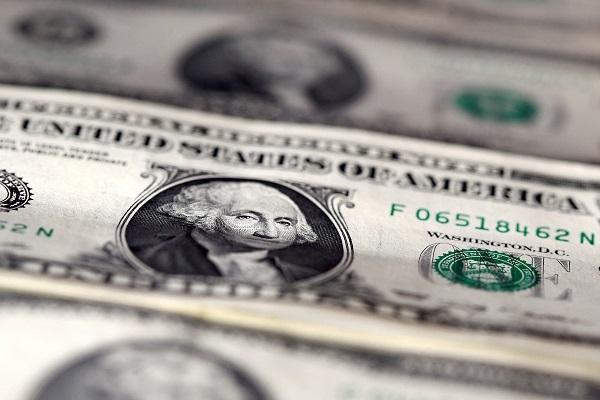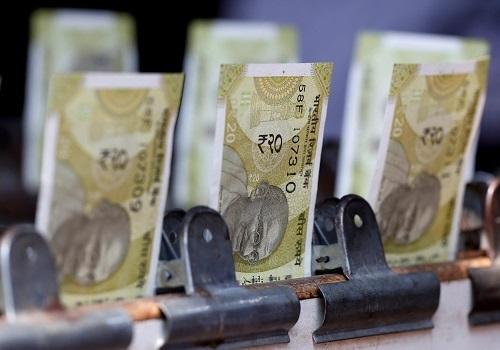
Dollar set for weekly gain as Fed cut bets recede
The US dollar is poised to end the week on a high note, with its best weekly performance in over a month. This surge in the dollar’s value comes as investors have begun to doubt the likelihood of the Federal Reserve cutting interest rates next month. The confusion surrounding the US jobs report has further muddied the waters, making it increasingly unclear whether the case for further easing has been strengthened. Meanwhile, the Japanese yen has experienced a sudden spike in value, prompted by hints from the Japanese government that it may intervene in the currency market to curb excessive volatility.
As of Friday, the dollar index, which measures the greenback’s performance against a basket of six major currencies, was up 0.2% at 98.43, putting it on track for a 1.3% weekly gain. This would be the dollar’s best weekly performance since early August. The dollar’s gains have been driven primarily by a decrease in bets on a Federal Reserve rate cut, with the market now pricing in only a 40% chance of a cut next month, down from over 50% earlier in the week.
The US jobs report, released on Friday, did little to clarify the situation. While the headline unemployment rate fell to a 50-year low of 3.5%, the report also showed a slowdown in wage growth and a decline in the labor force participation rate. The mixed signals from the report have left investors unsure of how to proceed, with some arguing that the strong jobs market supports the case for the Fed to hold off on further rate cuts, while others point to the slowing wage growth as evidence that the economy still needs support.
The yen, meanwhile, has been the biggest mover among major currencies, surging over 1% against the dollar to 107.92. This sudden spike in value comes after Japanese officials hinted that they may intervene in the currency market to curb excessive volatility. The yen has been highly volatile in recent weeks, driven by concerns over the global economic outlook and the potential for further monetary easing by the Bank of Japan. The possibility of intervention by the Japanese government has led investors to scramble to cover their short positions, driving up the yen’s value.
The potential for currency intervention by Japan is a significant development, and one that could have far-reaching implications for global financial markets. If Japan does intervene, it could lead to a broader reappraisal of the yen’s value and potentially even lead to a strengthening of the currency. This, in turn, could have a ripple effect on other currencies, including the dollar, and potentially even impact the global economy.
The dollar’s gains this week have been driven primarily by a decrease in bets on a Federal Reserve rate cut. The market is now pricing in only a 40% chance of a cut next month, down from over 50% earlier in the week. This decrease in rate cut bets has been driven by a combination of factors, including the strong jobs report and comments from Federal Reserve officials that have suggested the central bank may be hesitant to cut rates further.
The strong jobs report has been seen as a key factor in the decrease in rate cut bets. The report showed a decline in the unemployment rate to a 50-year low of 3.5%, as well as a slowdown in wage growth. While the slowing wage growth has been seen as a negative development by some, it has also been argued that the strong jobs market supports the case for the Fed to hold off on further rate cuts.
Comments from Federal Reserve officials have also played a role in the decrease in rate cut bets. Several officials have suggested that the central bank may be hesitant to cut rates further, citing concerns over the potential for inflation to rise. These comments have been seen as a sign that the Fed is becoming more cautious in its approach to monetary policy, and may be less likely to cut rates in the near future.
The potential for further monetary easing by the Federal Reserve is a significant factor in the dollar’s value. If the Fed does cut rates further, it could lead to a decline in the dollar’s value, as investors seek out higher-yielding currencies. On the other hand, if the Fed holds off on further rate cuts, it could lead to a strengthening of the dollar, as investors become more confident in the US economy.
In conclusion, the dollar is set for its best weekly gain in over a month, driven by a decrease in bets on a Federal Reserve rate cut. The mixed signals from the US jobs report have left investors unsure of how to proceed, but the strong jobs market and comments from Federal Reserve officials suggest that the case for further easing has not been strengthened. The yen, meanwhile, has surged in value after Japanese officials hinted at potential currency intervention. As the global economic outlook continues to evolve, it will be important to keep a close eye on developments in the currency market, and to consider the potential implications for investors and the broader economy.





